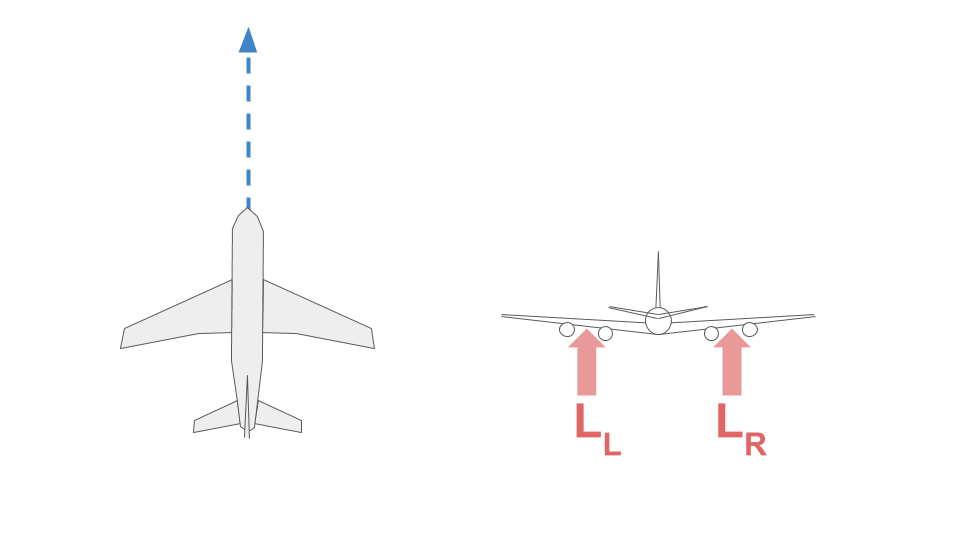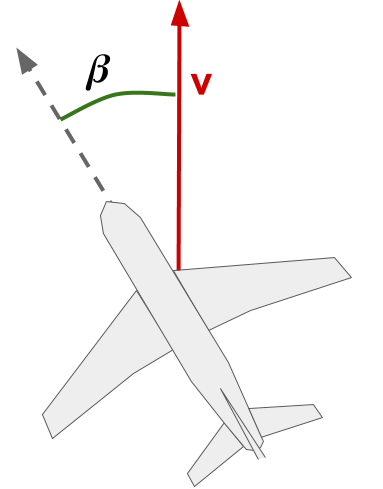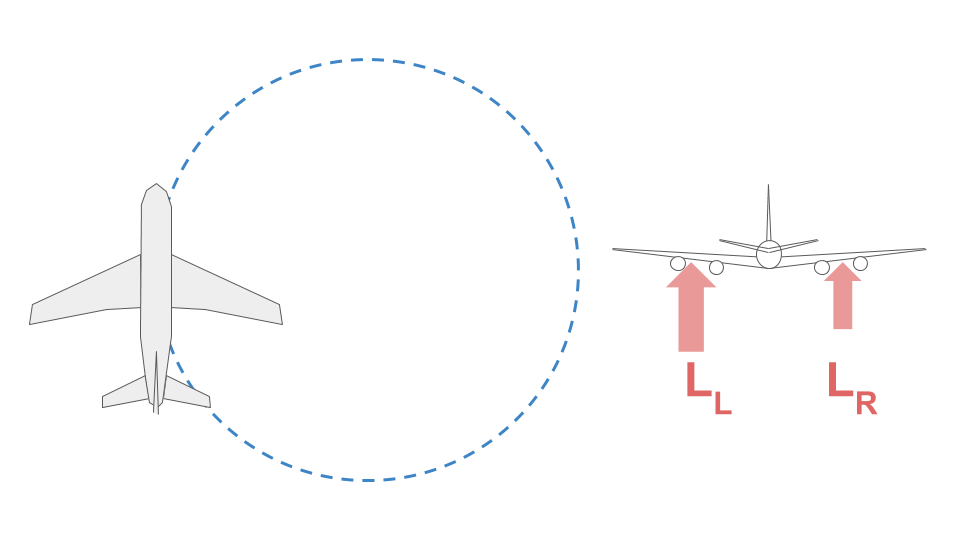05. Roll-Yaw Coupling
Roll-Yaw Coupling
In a coordinated turn, we can turn sideways by rotating our lift vector. This lets us turn without experiencing sideforce! This is a bit unintuitive, and in general lateral-directional motion is more complicated than longitudinal motion.
In particular, roll and yaw are physically coupled in a way that leads to more complex dynamics.
To understand this roll-yaw coupling, we need to think about how lift is generated.

The same plane viewed from above and behind. Here it's shown following a straight line path.
SOLUTION:
v_\text{left} = v_\text{right}
SOLUTION:
v_\text{left} > v_\text{right}
The increased relative airspeed over the left wing causes the left wing to feel more lift than the right wing.
This increased lift will cause a rolling moment that will cause the plane to roll clockwise.
The takeaway message here: yaw and roll are physically coupled. This coupling is what underlies the "Dutch Roll" mode, which you'll learn more about later.